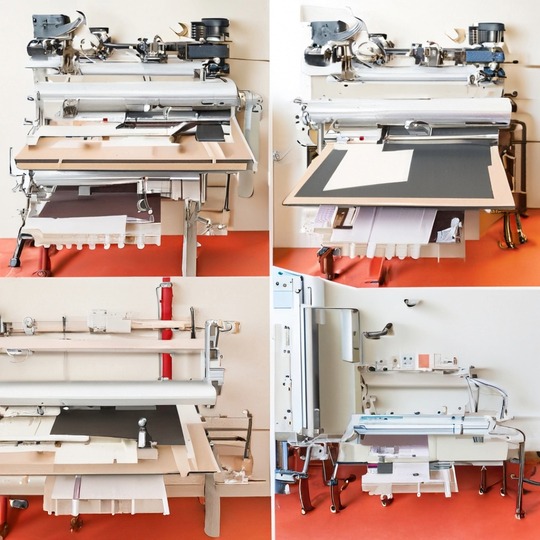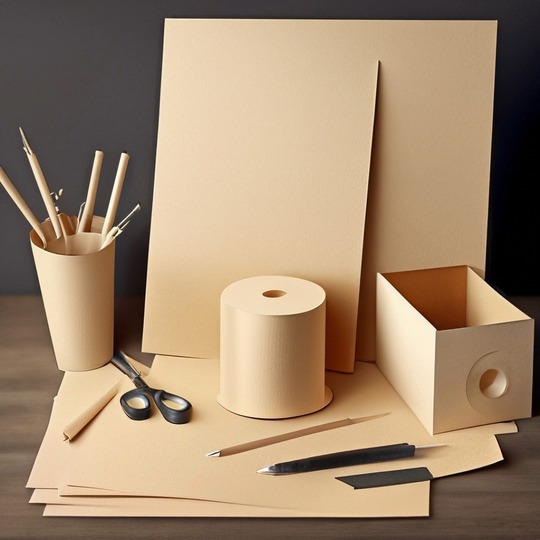I. Introduction
Paper making is an ancient art that holds historical significance in the development of human civilization. From its humble origins to its modern-day appeal, the process of crafting paper has evolved significantly.
Today, there is a growing interest in do-it-yourself (DIY) paper making kits and supplies, allowing enthusiasts to experience the joy of creating their own unique sheets of paper.
This article aims to provide an in-depth understanding of paper making kits and supplies, catering to beginners and experienced hobbyists alike.
II. The Basics of Paper Making
Paper making is a fascinating process that involves transforming plant fibers, such as wood pulp or recycled materials, into usable paper.
To get started, you will need some essential supplies, including a mold and deckle, a blender or papermaking beater, a vat, couch sheets, and access to water.

The process begins by breaking down the plant fibers in water and creating a pulp. The pulp is then poured into the mold and deckle, where excess water drains away, leaving behind a thin layer of fibers.
Once dried, the newly formed sheet of paper is ready to be used for various purposes.
III. The Different Types of Paper Making Kits
If you're interested in trying paper making yourself, there are various paper making kits available in the market to suit your needs. Let's explore some popular options:
- Beginner's Paper Making Kit
This kit is designed with newcomers in mind, providing everything needed to start the paper making journey. It typically includes a mold and deckle, easy-to-follow instructions, and pre-measured plant fibers or recycled paper.
A beginner's kit is an excellent choice for those who are new to the craft and want a seamless introduction to paper making.
- Eco-Friendly Paper Making Kit
For environmentally conscious individuals, an eco-friendly paper making kit is the way to go. These kits often incorporate recycled materials for paper pulp, and the molds and deckles are made from sustainable sources.
Going green with your paper making not only supports recycling efforts but also reduces the environmental impact of the process.
- Advanced Paper Making Kit

Crafted for seasoned paper makers, this kit offers additional features and tools to enhance the paper-making experience.
It might include specialty molds, additional deckles for unique shapes, and advanced techniques for seasoned artisans seeking to elevate their craft.
IV. Tips for Choosing the Right Paper Making Kit
Selecting the ideal paper making kit depends on your skill level, preferences, and budget. Consider the following factors when making your choice:
- Skill Level
Assess your expertise in paper making. Beginners may find starter kits more suitable, while experienced paper makers might benefit from advanced kits that offer greater customization.
- Budget
Set a budget for your paper making endeavor. Kits come in various price ranges, and understanding your spending limits will help you find the best kit within your means.
- Preferred Paper Type
Think about the kind of paper you wish to create. Some kits focus on crafting traditional, smooth paper, while others cater to artistic paper with textures and unique features.
V. Eco-Friendly Paper Making Supplies
In today's world, it's crucial to prioritize sustainability in all aspects of life, including crafting hobbies like paper making. Embrace eco-conscious options for paper making supplies to reduce environmental impact and promote responsible practices.
- Recycled Paper Pulp
Using recycled paper pulp as the base material for your paper making not only conserves resources but also gives new life to discarded paper products.
- Sustainable Deckles and Molds
Look for kits that utilize sustainably sourced materials for the molds and deckles. This choice supports responsible forest management and helps protect natural habitats.
VI. Exploring Paper Making Screens
The paper making screen, also known as the mold, plays a pivotal role in the paper making process. Different screen materials offer varying benefits and characteristics, so it's essential to understand their distinctions.
- Traditional Wooden Screens
Wooden screens have been used for paper making for centuries. They provide a classic touch to the craft and are known for their durability. However, they require careful maintenance to prevent warping.
- Synthetic Screens
Synthetic screens, often made from materials like nylon or polyester, offer consistent and smooth paper formation. They are resistant to water, reducing the risk of deformities in the paper.
Essential Paper Making Supplies - Your Comprehensive Guide

Introduction to paper making supplies :
In the world of paper making, having the right supplies is crucial for achieving outstanding results. The quality of these supplies greatly impacts the paper making process and the final product.
This is the best guide aims to highlight the importance of high-quality paper making supplies and how they contribute to creating beautiful and long-lasting handmade paper.
The Core Paper Making Supplies
Before delving into specific aspects, let's first explore the fundamental paper making supplies. These supplies form the foundation of any paper making supplies project and include pulp, water, and a mold and deckle. The combination of these materials sets the stage for the paper-making process.
Choosing the Best Paper Making Molds and Deckles
Molds and deckles play a pivotal role in shaping paper, determining its size and texture. In this section, we will compare various types of molds and deckles, such as wooden molds, metal deckles, and frameless varieties of paper making supplies.
By understanding the effects each type has on the appearance of the paper, readers can make informed decisions when selecting the most suitable option for their needs.

Using Acid-Free Paper Making Ingredients
Preserving the integrity of handmade paper is essential for ensuring its longevity. Acid-free paper making ingredients are a key factor in achieving this goal.
This section will elaborate on the importance of using acid-free materials and will recommend specific options for pulp, sizing agents, and other additives to help crafters create archival-quality paper.
Embracing Sustainability with Recycled Paper Pulp
For eco-conscious crafters, using recycled paper pulp is a fantastic way to embrace sustainability in their paper-making endeavors. This section will shed light on the environmental benefits of recycled materials and provide readers with sources and tips for obtaining high-quality recycled paper pulp, contributing to a greener approach to crafting.
Adding Color to Handmade Paper with Dyes and Pigments
To infuse artistic flair into handmade paper, dyes and pigments come to the rescue. In this part of the guide, we will introduce crafters to various dyes and pigments suitable for paper making. Moreover, we will share valuable techniques for achieving stunning and diverse color effects, enabling crafters to create vibrant and unique paper designs.
Essential Equipment for Handmade Paper Making
To establish a complete paper making setup, certain equipment is necessary. This section will provide an overview of essential equipment, such as a deckle box, vat, and press. By understanding the role of each piece of equipment, readers will be empowered to make informed choices based on their specific paper-making projects.
Elevating Handmade Paper with Botanicals
Nature offers a treasure trove of beauty that can be incorporated into paper making. In this inspiring section, we will showcase the captivating effects of embedding botanicals such as flowers and leaves into paper. Step-by-step instructions will guide readers on how to achieve stunning textures and create exquisite pieces of art using natural elements.
Storing and Preserving Handmade Paper
For handcrafted paper to stand the test of time, proper storage and preservation are vital. This section will provide valuable guidance on how to store handmade paper to maintain its quality and prevent deterioration over the years.
Additionally, we will suggest preservation methods that can be employed for valuable handmade paper creations.
In conclusion of paper making supplies, top-quality paper making supplies form the backbone of remarkable paper-making projects.
By choosing the right materials and understanding their significance, crafters can unlock their creativity and produce awe-inspiring handmade paper.
Encouraging readers to experiment with various supplies and techniques, we hope this guide has ignited a passion for the art of paper making, guiding them towards creating their own masterpieces. Remember, with the right supplies, the possibilities are limitless!
VII. Understanding Paper Making Machines
For large-scale paper production, paper making machines are essential. These machines streamline the process and increase efficiency.
- Cylinder Mould Machines
Cylinder mould machines are commonly used for commercial paper production. They produce paper in large rolls and are known for their high-speed output.
- Fourdrinier Machines
Fourdrinier machines are versatile and can produce various types of paper. They are suitable for both commercial and handmade paper production.
VIII. Handmade Paper vs. Commercial Paper
Handmade paper and commercial paper serve different purposes and have distinct characteristics.
- Handmade Paper
Handmade paper exudes uniqueness and charm. Its individuality stems from the hands-on process, and it often features varying textures and colors. Handmade paper is ideal for artistic projects and crafting personalized items.
- Commercial Paper
Commercial paper is produced on a larger scale using machines. It is consistent in texture and thickness, making it suitable for printing, writing, and packaging purposes.
IX. Artistic Applications of Handmade Paper
Handmade paper opens up a realm of creative possibilities for artists and crafters.
- Journaling
The textured surface of handmade paper makes it perfect for journaling, providing a unique writing experience and a distinct look to your personal reflections.
- Calligraphy
Calligraphers appreciate the way ink interacts with handmade paper, resulting in beautiful and expressive lettering.
- Mixed Media Art
Handmade paper can be seamlessly integrated into mixed media art, adding depth and dimension to the final piece.
X. Conclusion
Paper making is an art form that continues to captivate creative minds across the globe. Whether you're a seasoned artisan or a beginner, the joy of crafting your own paper with unique textures and designs is unparalleled.
By choosing eco-friendly options and exploring different paper making kits and supplies, you can embark on a sustainable and rewarding journey into the world of paper making.
Embrace your creativity, and let your imagination take flight through the beauty of handmade paper. Happy paper making!
FAQs About Paper Making Kits and Supplies
FAQ 1: What is paper making and how significant is its historical background?
Paper making is the process of transforming plant fibers into usable paper, and it holds immense historical significance in the development of human civilization. The art of paper making originated in ancient China and gradually spread to other parts of the world, revolutionizing communication and education. The creation of paper played a crucial role in the preservation and dissemination of knowledge, marking a pivotal point in human history.
FAQ 2: What are the essential supplies required for paper making?
To embark on your paper making journey, you will need several key supplies:
- Mold and Deckle: These are essential tools used to shape and form the paper fibers into a thin sheet.
- Blender or Papermaking Beater: This equipment helps break down the plant fibers into pulp, the raw material for paper.
- Vat: A container where the paper pulp is mixed with water.
- Couch Sheets: These are absorbent materials used to remove excess water from the newly formed paper.
- Access to Water: An abundant and accessible water source is necessary for the paper-making process.
FAQ 3: What types of paper making kits are available in the market?
There are various paper making kits catering to different needs and skill levels:
- Beginner's Paper Making Kit: Designed for newcomers, this kit provides all the essentials for a seamless introduction to paper making. It often includes a mold and deckle, pre-measured plant fibers, and beginner-friendly instructions.
- Eco-Friendly Paper Making Kit: For environmentally conscious individuals, this kit focuses on using recycled materials for paper pulp and sustainable molds and deckles.
- Advanced Paper Making Kit: Crafted for experienced artisans, this kit offers additional features and tools to elevate the paper-making experience, allowing for more intricate designs and textures.
FAQ 4: How can I choose the right paper making kit?
Choosing the perfect paper making kit requires consideration of your preferences and skill level. Here are some tips to help you decide:
- Skill Level: Assess your expertise in paper making. If you're a beginner, opt for starter kits with easy-to-follow instructions. Advanced kits are more suitable for seasoned paper makers.
- Budget: Determine your budget for the endeavor. Paper making kits come in various price ranges, so setting a spending limit will guide you to the most suitable option.
- Preferred Paper Type: Consider the type of paper you want to create. Some kits focus on traditional, smooth paper, while others offer textured and artistic paper varieties.
FAQ 5: How can I make my paper-making process more eco-friendly?
Embracing eco-conscious practices in paper making is vital for sustainable crafting. Here are some ways to achieve a greener paper-making process:
- Recycled Paper Pulp: Opt for using recycled paper pulp as the base material for your paper. This reduces the demand for virgin materials and supports recycling efforts.
- Sustainable Materials: Look for paper making kits that utilize sustainably sourced molds and deckles. Choosing products made from responsibly managed forests helps protect the environment.
- Water Conservation: Minimize water usage during the paper-making process by reusing water when possible and ensuring no water is wasted.
- Reuse and Recycle: Explore ways to reuse and recycle paper scraps during your paper-making projects to minimize waste.


